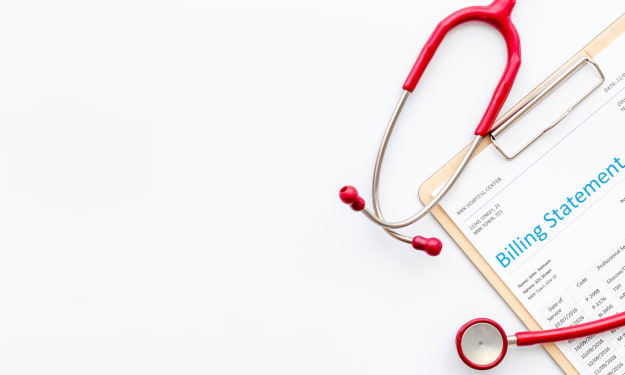RPM Medical Billing
Understanding RPM Medical Billing: Revolutionizing Remote Patient Monitoring:

Introduction:
In the rapidly evolving healthcare landscape, technology continues to reshape medical services. The Remote Patient Monitoring (RPM) technology enables remote monitoring and management of patients by healthcare providers RPM goes beyond traditional healthcare practices by leveraging innovative technology to bridge the gap between patients and medical professionals. In this article, we will delve into the intricacies of RPM medical billing, exploring its definition, importance, implementation, and future prospects.
1. Defining RPM Medical Billing: Empowering Healthcare Providers
RPM medical billing is a specialized process that allows healthcare providers to receive reimbursement for remotely monitoring and managing their patients. It encompasses the coding, documentation, and submission of claims to ensure appropriate compensation for the services rendered through remote patient monitoring. By embracing RPM medical billing, healthcare providers can harness the power of technology to enhance patient care and streamline their revenue cycle.
2. The Significance of RPM Medical Billing in Modern Healthcare
RPM medical billing holds immense significance in the current healthcare landscape. It facilitates the extension of healthcare services beyond traditional in-person visits, enabling healthcare providers to monitor patients’ well-being remotely. Continuous monitoring and real-time data collection can help healthcare professionals gain valuable insight into their patients’ health conditions, which leads to proactive interventions and improved results. RPM medical billing acts as the financial backbone, ensuring that healthcare providers are adequately compensated for their efforts in remote patient monitoring.
3. Unveiling the Mechanics of RPM Medical Billing
At its core, RPM medical billing operates through a well-defined workflow that comprises several essential steps. Initially, healthcare providers assess the eligibility of patients for remote patient monitoring services. Once deemed suitable, patients are provided with remote monitoring devices or applications capable of collecting and transmitting relevant health data. This data is securely transmitted to the healthcare provider’s system, where it undergoes meticulous analysis and interpretation. Based on these findings, healthcare professionals can make informed decisions, initiate timely interventions, and generate accurate billing for the RPM services provided.
4. Unlocking the Benefits of RPM Medical Billing
RPM medical billing offers a wide array of benefits for both healthcare providers and patients alike. Firstly, it enhances patient engagement and satisfaction by providing personalized care and constant support. Patients can conveniently monitor their health status, receive timely medication reminders, and maintain a stronger connection with their healthcare providers. Moreover, RPM medical billing significantly reduces the need for frequent hospital visits, leading to reduced healthcare costs and alleviating the burden on healthcare facilities. By leveraging RPM, healthcare providers can improve patient outcomes while optimizing their revenue streams.
5. Overcoming Challenges in RPM Medical Billing
Although RPM medical billing holds tremendous potential, it also comes with its own set of challenges. Assuring that the collected data is accurate and complete is one of the main challenges. Healthcare providers must implement robust systems and protocols to guarantee the integrity of the transmitted data. Additionally, compliance with privacy and security regulations is paramount to protecting patient information and maintaining trust. By addressing these challenges, healthcare providers can unlock the full potential of RPM medical billing and maximize its benefits.
6. The Future of RPM Medical Billing: Technology as the Catalyst
As technology continues to advance, the future of RPM medical billing looks promising. Innovations such as wearable devices, artificial intelligence, and telehealth platforms will further augment the capabilities of remote patient monitoring. These advancements will enable more precise data collection, real-time analytics, and seamless integration with electronic health records. As a result, healthcare providers can deliver enhanced care, improve patient outcomes, and streamline their billing processes through the continued evolution of RPM medical billing.
Conclusion
RPM medical billing represents a transformative approach to healthcare, revolutionizing the way patients are monitored and managed remotely. By embracing RPM, healthcare providers can deliver personalized care, improve patient outcomes, and optimize their revenue streams. However, implementing RPM medical billing successfully requires careful consideration of compliance, data accuracy, and privacy concerns. As the healthcare industry continues to evolve, RPM medical billing will play a pivotal role in shaping the future of patient care.
FAQs (Frequently Asked Questions)
FAQ 1: Is RPM medical billing limited to specific medical specialties?
RPM medical billing is applicable across various medical specialties, including cardiology, pulmonology, diabetes management, and more. It can benefit any healthcare provider aiming to remotely monitor and manage their patients.
FAQ 2: Can RPM medical billing help reduce healthcare costs?
Absolutely. By minimizing the need for frequent hospital visits and enabling proactive interventions, RPM medical billing contributes to reducing healthcare costs in the long run.
FAQ 3: What are the requirements for a healthcare provider to offer RPM services?
Healthcare providers offering RPM services need appropriate technology infrastructure, compliance with regulations, and the ability to interpret and act upon remotely collected patient data.
FAQ 4: Are there any specific coding guidelines for RPM medical billing?
Yes, there are specific coding guidelines that healthcare providers must follow when billing for RPM services. Accurate coding ensures proper reimbursement and adherence to regulatory requirements.
FAQ 5: How does RPM medical billing improve patient outcomes?
RPM medical billing enables continuous monitoring and timely interventions, leading to improved patient outcomes. It empowers healthcare providers to detect early signs of complications, manage chronic conditions effectively, and enhance overall patient care






Comments
There are no comments for this story
Be the first to respond and start the conversation.